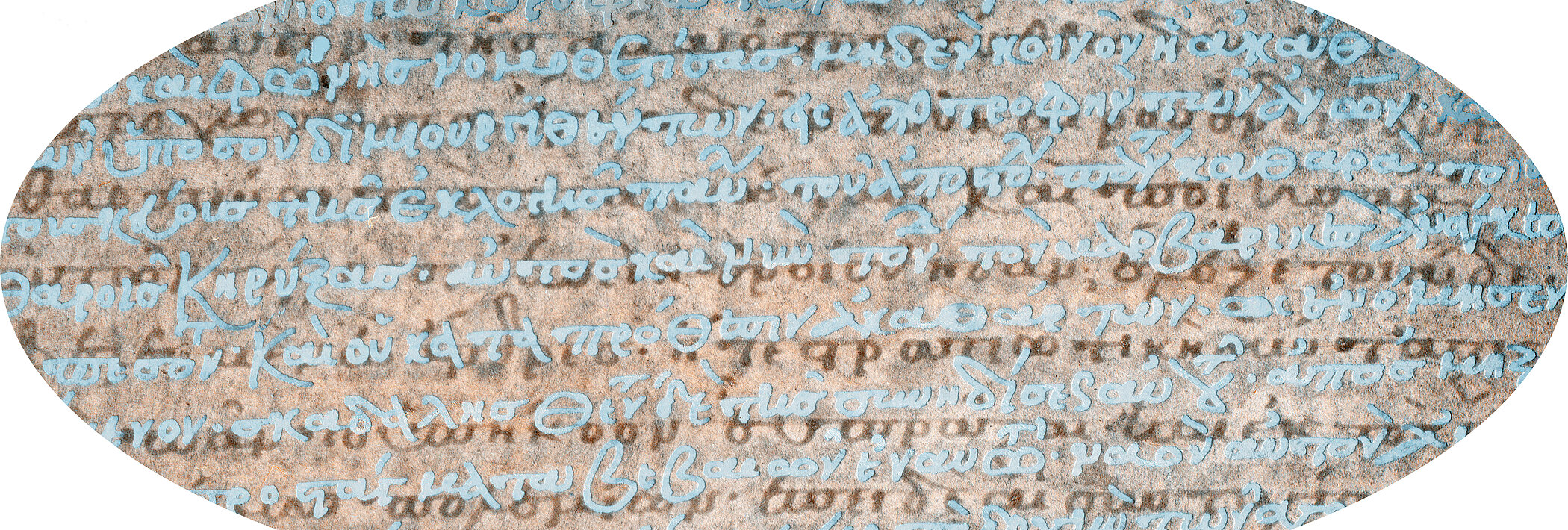Scythica Vindobonensia

♦ ♦ ♦ Digital recovery ♦ ♦ ♦
♦ Since the discovery of the Scythica Vindobonensia (alias Dexippus Vindobonensis) in the Codex Vind. hist. gr. 73 of the Austrian National Library in Vienna (ANL, Department of Manuscripts and Rare Books), two projects funded by the Austrian Science Fund (FWF) have aimed at further revealing, deciphering, editing and examining the new fragments:
(1) “Important textual witnesses in Vienna Greek palimpsests” (2012–2015), which was led by Otto Kresten and conducted at the Austrian Academy of Sciences (Byzantine research), and
(2) “Scythica Vindobonensia” (since 2015), which has been led by Fritz Mitthof and Otto Kresten and conducted at both the University of Vienna (Ancient history) and the Austrian Academy of Sciences (Byzantine research).
Within these two projects, Gunther Martin and Jana Grusková, have been deciphering and investigating the text of the Scythica Vindobonensia and preparing its critical edition. To make the erased 11th-century writing visible, state-of-the-art non-invasive methods of digital recovery of palimpsests have been applied in cooperation with the Austrian National Library and several technical and scientific teams, which provide expertise in this field.
During all imaging experiments, the first priority was to ensure the continued safety of the medieval manuscript. Its conservation was undertaken by Wolfgang Kreuzer and Christa Hofmann, the Head of the Conservation Department of the ANL. Before and after each of the imaging sessions, which on behalf of the Department of Manuscripts and Rare Books of the ANL were supervised by the librarians Ernst Gamillscheg in 2013 and Katharina Kaska in 2014–2017, special treatments were undertaken to stabilise the manuscript.
♦ Of fundamental importance was the multispectral imaging organized by the FWF project “Important textual witnesses in Vienna Greek palimpsests” in 2013 and performed at the Austrian National Library in cooperation with the Early Manuscripts Electronic Library (EMEL) and a team of image scientists and engineers assembled by it: Michael Phelps (director), Kenneth Boydston, Roger L. Easton, Jr., Keith T. Knox, William A. Christens-Barry, David Kelbe, Damianos Kasotakis. A variety of processing methods had to be used to recover the faint remnants of the thoroughly erased text. This required considerable computing time. For each page, a large number of different processed images was submitted to Jana Grusková and Gunther Martin, the two editors of the Scythica Vindobonensia, who carefully evaluated how useful each image was for deciphering the text. Upon their feedback, the image scientists Roger L. Easton, Jr., Keith T. Knox, David Kelbe and William A. Christens-Barry applied additional image processing on problematic areas. The visibility of individual characters has ranged from rather obvious to invisible. The portions of the original characters obscured by the upper text could not be made visible. Based on the resulting images, Grusková and Martin deciphered up to 60% of the original text. To give other scholars access to the new fragments as soon as possible, in 2014 and 2015 they published a work-in-progress transcription of six pages together with special images, a translation and some preliminary considerations on the text.
♦ In order to maximize the visibility of the remaining 40% of the erased text, additional state-of-the-art non-invasive methods of digital imaging and image processing were applied within the subsequent FWF project “Scythica Vindobonensia”. In 2016, a new multispectral imaging was conducted in cooperation with EMEL and its team. In the same year, the project performed the first experiments with X-ray fluorescence (XRF) element mapping in cooperation with Ira Rabin and Oliver Hahn from the German Bundesanstalt für Materialforschung und -prüfung (BAM) in Berlin to see if this method could warrant further recovery.
♦ At the end of 2017, fast scanning XRF element mapping was performed on the Vienna palimpsest of the Scythica Vindobonensia at the Deutsches Elektronen-Synchrotron (DESY) in Hamburg with Leif Glaser as the principal investigator (Project I-20170505 EC, project leader: Jana Grusková). The costs of the trip of the valuable manuscript from Vienna to DESY in Hamburg were covered from the Holzhausen-Legat of the Austrian Academy of Sciences (project leader: Fritz Mitthof).
♦ Gunther Martin and Jana Grusková, the editors of the Vienna fragments, and the image scientists have been intensively working on the collected image data, both spectral and XRF, towards revealing the erased text of the Scythica Vindobonensia as completely as possible. The editors are preparing a critical edition (editio princeps) of the Scythica Vindobonensia with a philological and historical commentary (including studies on individual aspects of the new text, i.e. its language, style etc.). The edition will be published as soon as the complex process of digital recovery and the decipherment of the faint surviving traces of the erased text have been completed.
For more see the articles : Grusková – Martin – Kresten – Mitthof (2020) 549–564 (with further bibliography)
Jana Grusková, Gunther Martin, Otto Kresten, Fritz Mitthof, Katharina Kaska, Christa Hofmann, Wolfgang Kreuzer, Michael Phelps, Kenneth Boydston, Roger L. Easton, Jr., Keith T. Knox, David Kelbe, Damianos Kasotakis, William A. Christens-Barry, Dale Stewart, Ira Rabin, Oliver Hahn, Leif Glaser, Jan Garrevoet, Ivan Shevchuk, Stephan Klumpp, Daniel Deckers, Jens Buck, Insights into the Digital Recovery of the Scythica Vindobonensia, in: M. Cronier - B. Mondrain (eds.), Le livre manuscrit grec : écritures, matériaux, histoire. Actes du IXe Colloque international de Paléographie grecque. Paris, 10–15 septembre 2018 (Travaux et mémoires 24/1), Paris 2020, 945–967.